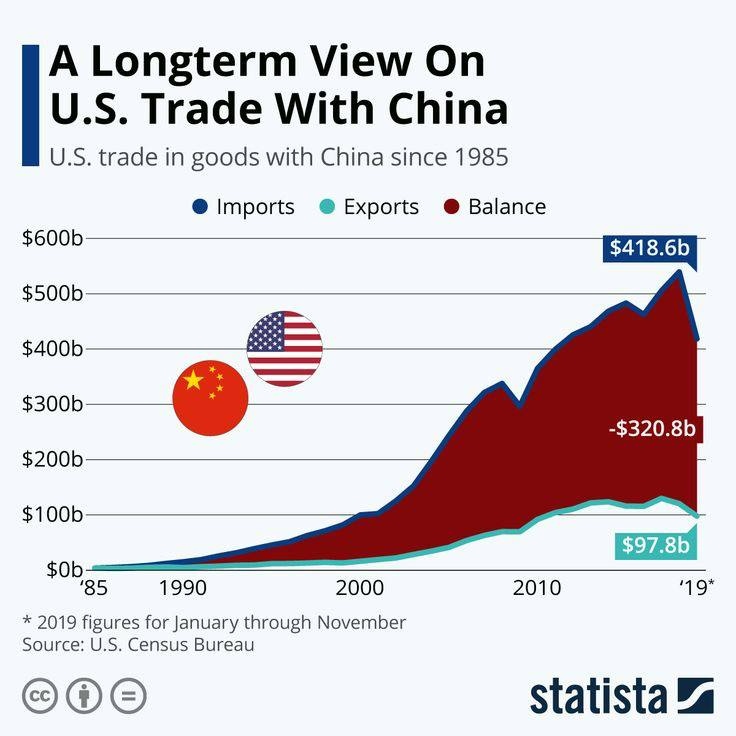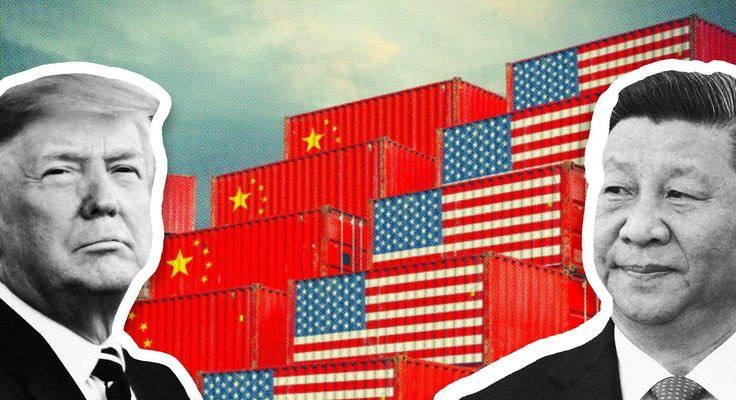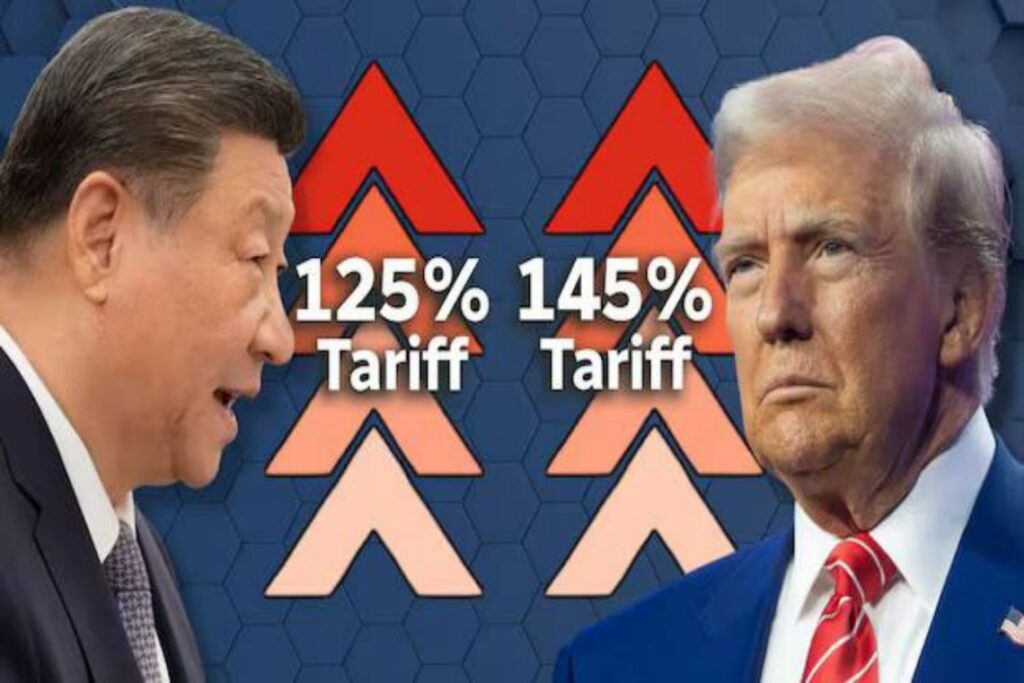Simply put, a trade war is an economic conflict between two countries. It starts with extreme protectionism, in which one country retaliates against another’s unfair trade practices by raising tariffs on imports or imposing other trade barriers. An example is the ongoing US-China trade war, which has become full-blown and shows no signs of easing.
The growing trade war between the United States and China has seen the world’s two greatest economies going tit-for-tat with increased tariffs on imports. After the White House announced that Chinese imports now face tariffs of at least 145%, China also raised the tariffs on US imports to 125%.
The economic tussle between the two world powers and its impact on the global economy has been a major source of worry to experts. So, what does this full-blown trade war mean for the global economy? How did we get here? Where will this end? Here’s all you need to know about the ongoing trade wars, their origin, and what that means for you.
History of Trade Wars
Trade wars did not start in 2025. In fact, they have existed for as long as countries have been trading with one another. Some of the first trade wars to be recorded were those between colonial powers over the right to trade exclusively with their colonies. The major trade wars in history include:
The British-China Opium Wars
In the 19th century, the British Empire had been sending India-produced opium to China for years. However, the Chinese Emperor later decreed the drugs to be illegal. Despite attempts to settle the conflict, the Emperor sent troops to confiscate the drugs. During the raid, China confiscated well over 1,000 tons of opium stored at Canton (Guangzhou) by British merchants.
During the trade war, British warships destroyed the Chinese blockade of the Pearl River (Zhu Jiang) and attacked and occupied the city. Despite the counterattacks from the Chinese troops, the British troops stood their ground and occupied Nanjing. Peace negotiations followed soon after, leading to the Treaty of Nanjing.

US-Europe
In 1930, the United States enacted the Smoot-Hawley Tariff Act to protect American farmers and businesses from foreign competition. The Act raised the already high import duties on foreign agricultural products and manufactured goods by 20%. This increased the import duties to almost 40%, and foreign countries weren’t having it.
The tariff increases in the Smoot-Hawley Act strained the economies of countries already struggling to rebuild after World War I. As a result, multiple nations retaliated against the US by imposing higher tariffs, which caused global trade to decline. The trade wars aided America’s entry into the Great Depression, forcing President Roosevelt to pass the Reciprocal Trade Agreements Acts to reduce trade barriers.
US- China, Others
In 2018, during President Trump’s first term, he imposed a series of tariffs on a wide range of goods, from steel and aluminum to solar panels and electronics, such as washing machines. The increased tariffs affected goods from the European Union, Canada, Mexico, and, of course, China.
In retaliation, Canada also imposed a series of temporary tariffs on American steel and other products. Similarly, the EU also imposed higher tariffs on American products. Joining in the trade war, China also imposed stiff tariffs on American imports.
How Much Trade Does the US Do With Other Countries?
While the United States is the 2nd largest goods exporter in the world, behind only China, it is the largest goods importer in the world. Mexico was the top trading partner of the United States in 2024. A key import partner in the automotive and electronics sector, US imports from Mexico totaled over $505 billion.
According to the US Bureau of Economic Analysis, the trade between the US and China totals $585 billion, with the US importing far more from China in 2024. While the US imports from China total $440 billion, China imports from the US total $145 billion. This left the US running a trade deficit—the difference between what it exports and imports—of $295 billion with China in 2024.
Canada was another top importer into the US in 2024, especially in energy, automotive, and lumber. US imports from Canada totaled $421.21 billion in 2024. In addition to these top importers, the US also imports agricultural products like cocoa, coffee, and sugar from African and South American countries.

How the Trade Wars Affect You
As stated earlier, the US is the largest importer of goods in the world and the global leader in imports due to its large and diverse consumer economy. After the 2018 trade wars between the US and other countries, several studies, including one from the International Monetary Fund (IMF), show that the cost of the tariffs on imports into the US was passed down to the consumers.
You may wonder how the everyday American consumer might be caught in the melee of tariffs between countries, but the answer is simple: higher prices of goods. As American companies digest the increased import tariffs and adjust their prices in response, every imported good into the US will become more expensive.
The US imports cocoa from the Ivory Coast and Ghana, and both countries have been hit with 21% and 10% tariffs, respectively. These increased import duties have caused chocolate business owners to decry the cost of manufacturing in America, with some claiming manufacturing is now cheaper outside the country.
That means you might have to spend more on your favorite chocolate bar or at your favorite coffee shop in the coming weeks. However, that is not even the worst of it. The country that is most targeted in the trade wars, China, is one of the top exporters of electronics to the US.
From laptops to TVs, smartphones, batteries, toys, and telecoms equipment, these goods were already set to become very expensive for Americans due to the 20% tariff Trump had initially imposed on China. However, now that the tariff has increased to 125% and even 145% on some Chinese imports, the impact on American consumers will be greater.
Imagine walking into an Apple store and seeing an over 100% increase in the prices of smartphones. Intense, right? Luckily, the US Customs and Border Protection has announced a list of tech categories exempt from the 145% tariff imposed on goods from China, including computers, smartphones, and chip-making machines. This is a huge relief for the tech sector despite the 20% tariff still in place.
Yet, there is no winner in a trade war, as the prices of US imports into China will also increase drastically due to the retaliatory 125% tariff imposed on them. Hence, consumers on both ends are getting hurt in the crossfire.

What Does This Trade War Mean for Other Countries?
As the largest goods importer in the world, President Trump’s tariffs on US imports threaten the economies of other countries and may slow global growth. Already, the financial markets have taken a hit, with stock prices plummeting and companies like Apple experiencing their worst days in years.
According to IMF Managing Director Kristalina Georgieva, the tariffs “represent a significant risk to the global outlook at a time of sluggish growth.” Several world leaders have also condemned the tariff wars, emphasizing that they will be a major blow to the world economy and that their consequences will be dire for millions of people across the globe.
If trade wars drag out for a long time, global trade will take a hit, and countries might be dragged into recession in the case of an all-out trade war. As the trade wars rage on, the question on everyone’s mind is, “Where does this end?”
You Might Also Like:
- A Look Back at the 1995 Execution That Changed Nigeria’s Environmental History
- From Chemists to Cartels: The Long War Against Fake Drugs and Drinks in Nigeria
- From Oil Boom to Basket Prices: The Long History Behind Nigeria’s Inflation Crisis
- From Oil Boom to Empty Pumps: The Long History Behind Nigeria’s Fuel Crisis
- Presidential Pardons in Nigeria: A Historical Look at Whether It Is Justice or Politics


